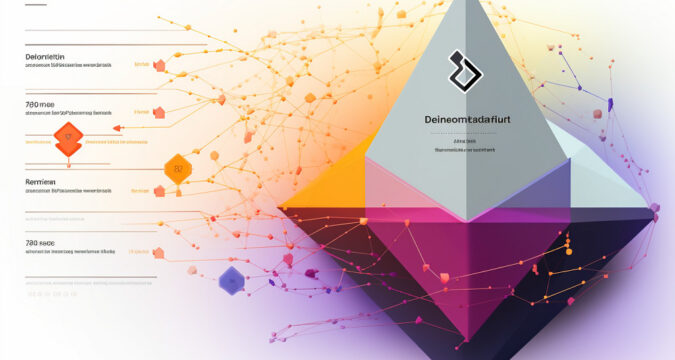
Differences Between Danksharding And Proto-danksharding
Danksharding is a layer-2 solution that augments the capabilities of Ethereum by facilitating scaling. Proto-danksharding is a step in the EIP-4844 approval for the Cancun-Deneb upgrade,
Following the commencement of the Goerli testnet upgrade on January 17, the Sepolia testnet will be implemented on January 30, while the Holesky testnet will be implemented on February 7. However, the exact date of mainnet implementation remains undisclosed.
With growing user congestion, Danksharding for Ethereum aims to optimize the speed and cost of layer-2 solutions, particularly rollups. It significantly influences the future scalability of Ethereum.
Danksharding is a crucial phase in extensively enhancing the capacity of the Ethereum network. Significant transitions occurred in preceding phases, including the switch from proof-of-work to proof-of-stake (PoS).
Enhancing Blockchain Efficiency With Layer 2 Solutions
Layer-2 solutions improve the scalability of the foundational chain by adding new frameworks or protocols to pre-existing blockchains. Layer 2 solutions operate independently of the core blockchain, processing transactions off-chain and performing periodic verifications on-chain.
Layer two nodes can process thousands of transactions cost-effectively and speedily, whereas the Ethereum main chain handles about 15 transactions per second. This efficiency is achieved by optimizing transaction processing for layer-2 solutions using peripheral network architecture options.
The decentralized base chain maintains security and decentralization by verifying transactions from the off-chain layer 2. Arbitrum allows users to interact with a layer-2 front-end, making transactions faster and more cost-effective than Ethereum.
Rollups are an example of a layer-2 solution; they connect validium, channels, and sidechains. Rollups are the aggregation of transactions that occur on layer 2 before being transmitted to the mainchain for verification. Thus, they lower expenditures associated with fluctuating transaction prices by dispersing fixed costs across multiple transactions.
Introducing Data Blobs to Ethereum Through Danksharding And Proto-danksharding
Data structures and the KZG polynomial commitment scheme are two danksharding and proto-danksharding components critical for improving Ethereum’s rollup solutions. These technology components form the foundation for expanding Ethereum’s rollup functionalities.
A crucial component of the Danksharding approach for layer-2 scaling is the integration of structures. Blobs, or substantial data structures, are essential to Ethereum’s transactional structure. Blobs offer a more efficient alternative to storing transaction data in rollups using call data.
Every Ethereum node must process the data it contains and leave the data on the blockchain indefinitely. Therefore, the existing technique, Calldata, is ineffective for rollups. Rollups, which often need the data for a limited time to validate and implement transactions, do not require this permanence.
However, Proto-danksharding will attach data blobs to transaction blocks, which will be removed automatically in less than three months (typically one month). Also, these data, which have a payload of 125 kilobytes, are stored on the Ethereum consensus layer rather than the Ethereum Virtual Machine (EVM).
Challenging The Blockchain Trilemma
The blockchain trilemma theory proposes that achieving scalability, decentralization, and security is a significant challenge for blockchain networks. Blockchain developers must create and implement suitable approaches to maintain security and decentralization and achieve optimal scalability and transaction throughput.
Unlike traditional financial networks, which rely on banks, blockchains operate independently of third-party intermediaries. The decentralized network of autonomous computers known as nodes is responsible for maintaining and validating transaction ledgers.
As each transaction requires validation across many nodes, the processing load on a more significant number of participants grows according to the network’s size. As a result, scalability becomes a challenge as the network expands.
Completing The Ethereum Roadmap
With increasing technological advancements and insights, the Ethereum roadmap’s completion date is subject to change. Hence, innovations like staking withdrawals will likely be implemented within the next six months.
However, implementing other advancements, such as quantum resistance, could take an extra five to 10 years. As separate components are being built concurrently and at varying advancement rates, providing a specific completion date for the complete roadmap is almost impossible. Hence, external circumstances influence the urgency of an upgrade.




